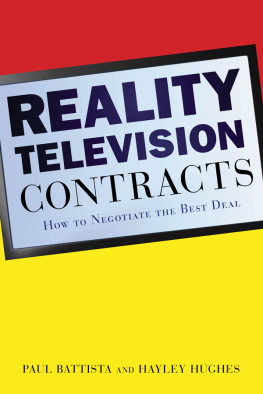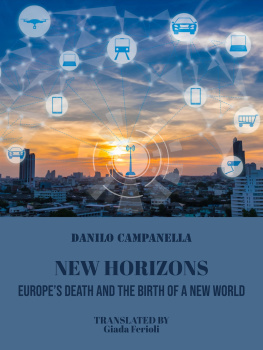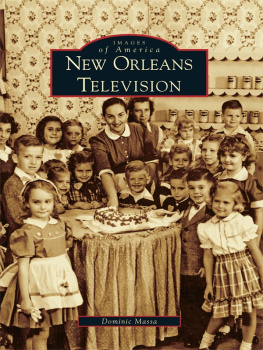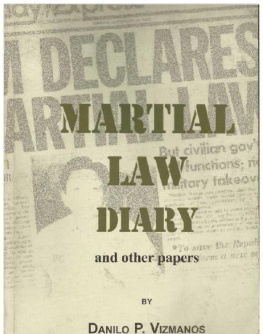BUYING REALITY
Donald McGannon Communication Research Centers Everett C. Parker Book Series
OLIVIER SYLVAIN, DIRECTOR MATHIAS KLANG, SERIES EDITOR
This series seeks to publish research that can inform the work of policy makers, policy advocates, scholars, and students as they grapple with a rapidly changing communications environment and the variety of policy issues arising within it. The series employs a broadly defined notion of communications policy, in that it considers not only scholarship addressing specific policy issues and processes but also more broadly focused communications scholarship that has direct implications for policy making.
EDITORIAL BOARD:
Patricia Aufderheide, American University
Ellen Goodman, Rutgers University School of Law, Camden
Allen Hammond, Santa Clara University School of Law
Robert B. Horwitz, University of California at San Diego
Robert W. McChesney, University of Illinois
Jorge Schement, Rutgers University, New Brunswick
Copyright 2020 Fordham University Press
All rights reserved. No part of this publication may be reproduced, stored in a retrieval system, or transmitted in any form or by any meanselectronic, mechanical, photocopy, recording, or any otherexcept for brief quotations in printed reviews, without the prior permission of the publisher.
Fordham University Press has no responsibility for the persistence or accuracy of URLs for external or third-party Internet websites referred to in this publication and does not guarantee that any content on such websites is, or will remain, accurate or appropriate.
Fordham University Press also publishes its books in a variety of electronic formats. Some content that appears in print may not be available in electronic books.
Visit us online at www.fordhampress.com.
Library of Congress Cataloging-in-Publication Data available online at https://catalog.loc.gov.
Speaking at the Morgan Stanley Technology, Media, and Telecom Conference at the Park Hotel in San Francisco in February 2016, Les Moonves, the then-president of CBS, described the 2016 presidential election campaign as a circus that may not be good for America, but its damn good for CBS. He could have stopped there, but he just had to continue: Sorry. Its a terrible thing to say. But, bring it on, Donald. Keep going (Bond 2016, 2). Moonves spoke like the businessman that he is: Were in it for the money.
In the presidential race in 2016, the losing candidate and her supporters bought 75 percent of the political ads, while Donald Trump was the beneficiary of an estimated $5 billion of media coverage for which he did not have to pay (Stewart 2016). Trumps tweets were irresistible to the broadcast and cable networks as he made one over-the-top statement after another. Even he was surprised by it.
However, if we look at the down-ballot racesthe races for the US House of Representatives and Senatethe 2016 election looked very much like previous elections. Political ads, not tweets, carried the messages of candidates because the vast majority of candidates did not enjoy the name recognition and celebrity of the presidential contenders. Local candidates depended upon campaign ads to convey their messages. As a result, local television stations inundated citizens with political ads that often proclaimed mutually exclusive visions of reality.
Specifically, of the 4.29 million ads that aired on broadcast television (not cable) in the 20152016 election cycle, only about 1 million targeted the presidential campaign. The remaining ads targeted down-ballot races, including 926,426 ads for Senate races (at a cost of $655 million), 621,556 for House candidates (at a cost of $335 million), 463,683 for governor races, and about 1.25 million ads for state attorney general, state representative, and mayoral races (Fowler, Ridout, and Franz 2016). In other words, more than three-fourths of the political ads that we saw during a white-hot presidential campaign were directed at races that were not for the presidency. More importantly, we did not even recognize that imbalance. To be sure, the presidential race had enough media coveragebroadcast television, cable news, social media, and talk radioto make it seem that there were no other races being contested. It literally consumed all of the air in the roomprecisely as Moonves had anticipated. But that is the point. For the down-ballot races, political ads became critically important in a media environment in which they were the principal means for candidates to advance their messages. And the significant majority of those ads were aired on local television newscasts.
Of course, political advertising is only possible with money. And the money has increased significantly over time. In 2006 political advertising on local television amounted to $2.6 billion. In 2012 it was just over $3 billion (Matsa 2014). In 2014 it increased dramatically to $3.8 billion. There was an expectation that 2016 would see $6 billion in political advertising on local television. Because of the immense amount of free coverage that Donald Trump received from the broadcast networks, he did not spend as much money on political ads as was anticipated. As a result, political ad spending remained around the level of the 2012 campaign, but the amount was significant$9.8 billion in total political ad spending with $4.4 billion going to broadcast television stations (Cassino 2017). The spending increase continued for the 2018 midterm election to over $3 billion, a record (Miller 2018a). That is a lot of money.
Why Study Political Ads?
What is so compelling about political ads? Why should we look at them at all? First, they are ubiquitouseven in this age of social media, they remain the primary mechanism through which candidates communicate their message (Fowler, Ridout, and Franz 2016). Second, political ads are the largest expense in a typical campaign for a major office (Cassino 2017). Third, they can persuade voters and affect voter turnout (Dunaway et al. 2019; Valentino, Hutchings, and Williams 2004; Huber and Arceneaux 2007). Fourth, they can drive media coverage of the campaigns (Fowler and Ridout 2009; Ridout and Fowler 2012). Fifth, they can serve as signals for what elected officials will do once elected (Ridout, Franz, and Fowler 2014). In short, political ads matter, especially in down-ballot races for the House of Representatives where candidates who flood and frankly overwhelm ad space will increase their vote share and their chances of winning (Jones and Jorgensen 2012, 182). That is why candidates, action committees, and consultants spend billions of dollars to produce and to disseminate them in every election campaign.
My concern in this book is, what did we, as citizens, get for the money? I know what the political advertisers got for their moneyan audience that they can persuade. I know what the broadcasters gotan economic windfall. All of this is perfectly legal in the system that we have set up for elections in the United States. However, given the sheer volume of millions of political ads that citizens see, what political information did broadcast stations provide for their viewers beyond the political ads that they aired? And, given the imbalance of presidential campaign versus down-ballot election ads, how did that play out in those races?












